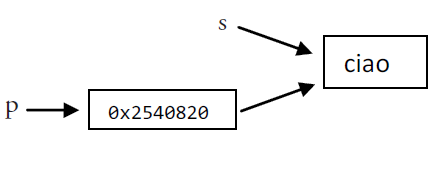一、什么是指针
二、指针操作
1、如何声明指针类型, *int,在类型前面加个*号
*号是指针类型,取值(把内存地址值变成值)。&号(取址符)是读取值内存地址。
package main
import "fmt"
func main(){
s := "good bye"
var p *string = &s
*p = "ciao"
fmt.Printf("Here is the pointer p: %p\n", p) //Here is the pointer p: 0x10b840f0
fmt.Printf("Here is the string *p: %s\n", *p)//Here is the string *p: ciao
fmt.Printf("Here is the string s: %s\n", s )//Here is the string s: ciao
}
s是赋值。
&s是提取内存地址。*p是值。*string是内存地址。
内存示意图如下:

























 被折叠的 条评论
为什么被折叠?
被折叠的 条评论
为什么被折叠?








